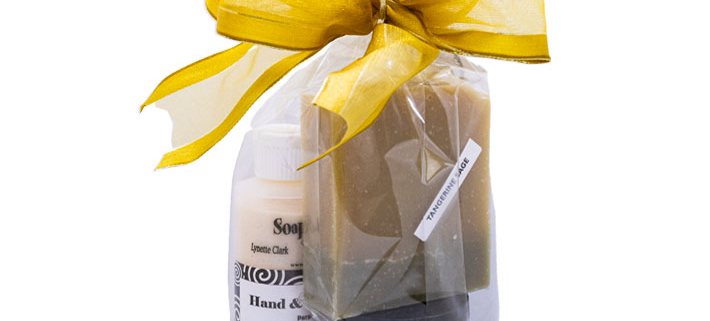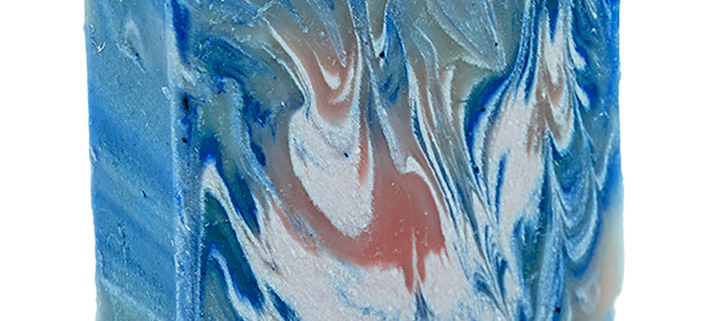The holiday season is a time to celebrate love, joy, and togetherness. One of the best ways to show your appreciation for the special people in your life is through personalized gifts. If you’re looking for something that offers both beauty and practicality, why not consider customizable candle gifts and handmade soap sets? These thoughtful gifts can be tailored to each recipient, offering a personal touch that spreads warmth and cheer. In this blog, we’ll explore unique holiday candle and soap gift ideas that are perfect for the season.
The Charm of Personalized Gifts for Holidays
When it comes to gift-giving, nothing speaks louder than a present that reflects the personal tastes and preferences of the recipient. Personalized gifts for holidays have a special ability to show that you’ve put extra thought into what will make your loved one feel appreciated. From custom scents to engraved messages, creating something unique adds a deeper layer of meaning to your holiday presents.
Personalized candles and soap gift sets are ideal because they are not only useful but also create a sensory experience. Candles offer warmth and ambiance, while handmade soaps provide a luxurious treat for the skin. Whether you’re crafting a DIY gift or purchasing a customizable option, these gift ideas are bound to be memorable.
Why Customizable Candle Gifts Make Perfect Holiday Presents
Candles are universally loved and can be used to create a cozy atmosphere during the cold winter months. Customizable candle gifts allow you to go beyond generic store-bought options and create something truly meaningful. You can tailor the scent, container, and even add a special message or design to make it uniquely yours.
Top Benefits of Customizable Candle Gifts:
- Personalization: Choose the recipient’s favorite scent or blend of fragrances.
- Custom Designs: Select the candle jar, color, and label design to suit their style.
- Special Touch: Add personalized engravings, messages, or artwork to make the candle one-of-a-kind.
- Eco-Friendly Options: Use natural materials like soy wax and essential oils for a sustainable gift.
Let’s dive into some DIY candle gift ideas and creative ways to personalize them.
DIY Candle Gift Ideas: Creative Ways to Personalize Your Candles
Making your own candles can be a rewarding and fun way to create personalized gifts for the holidays. Not only can you control the ingredients, but you can also infuse the candle with a sense of your own creativity. Here are some DIY candle gift ideas that are sure to impress.
1. Holiday-Themed Candles
Create candles that celebrate the spirit of the season. Think cinnamon, peppermint, and pine scents that evoke memories of winter wonderlands. You can also use festive colors like red, green, or gold to match the holiday decor. Add a touch of sparkle with biodegradable glitter for an extra festive feel.
Materials You’ll Need:
- Soy wax
- Essential oils or fragrance oils (cinnamon, clove, pine, etc.)
- Candle wicks
- Candle dye or natural pigments
- Glass jars or tins
- Festive labels and ribbon
You can also customize the candle jar by painting it or adding decals that reflect the recipient’s personality.
2. Scented Layered Candles
Layered candles offer a visual and aromatic experience, making them a unique holiday gift. Choose multiple scents that complement each other, and pour each layer one by one. This works beautifully with seasonal fragrances like vanilla, gingerbread, and apple spice.
Instructions:
- Melt soy wax in separate containers for each scent.
- Add the fragrance oils and dyes to each batch.
- Pour the first layer into the jar and let it cool completely.
- Repeat with the remaining layers, ensuring each one solidifies before adding the next.
The result is a beautifully layered candle with different scents that evoke a journey through the holiday season.
3. Personalized Scented Candles
A simple way to make a gift extra special is by choosing a scent that resonates with the recipient’s favorite memories or places. For example, if they love tropical vacations, opt for coconut and pineapple scents. If they enjoy spending time in nature, go for eucalyptus or cedarwood.
You can take it a step further by designing a custom label for the candle. Whether it’s an inside joke, a heartfelt message, or a meaningful quote, the label adds a personal touch that makes the candle truly unique.
4. Pressed Flower Candles
If you want to give your candles a botanical, artisanal look, try embedding pressed flowers into the outer layer of the candle. This DIY candle idea not only smells wonderful but also looks like a piece of art.
How to Make Pressed Flower Candles:
- Melt your wax and pour it into a transparent container.
- Once the wax has slightly cooled but is still soft, press dried flowers against the inner walls of the container.
- As the candle hardens, the flowers will be visible through the transparent wax, creating a delicate, nature-inspired design.
Luxurious Soap Gifts: Handcrafted, Personalized Soaps for a Spa-Like Experience
Much like candles, handcrafted soaps make for an elegant and thoughtful holiday gift. With countless customization options in terms of ingredients, colors, and shapes, you can design soaps that are both beautiful and beneficial for the skin. Handmade soap gifts offer a practical luxury that anyone would appreciate.
1. Customized Soap Shapes and Scents
One of the easiest ways to personalize soap is through its shape. You can find molds in a variety of shapes, from holiday-themed designs like snowflakes and Christmas trees to more personalized options like hearts or initials.
You can also customize the soap’s scent by choosing essential oils that complement each other. Lavender, eucalyptus, and chamomile create calming blends, while citrus and mint are energizing and refreshing.
2. Exfoliating Soaps
Exfoliating soaps are a perfect choice for those who enjoy pampering their skin. You can add natural exfoliants like ground oatmeal, coffee grounds, or sea salt to your soap base. Pair it with nourishing oils like coconut or shea butter for a moisturizing touch.
For a more seasonal twist, consider adding crushed candy canes or cinnamon to your soap. Not only will it smell delicious, but it will also offer gentle exfoliation.
3. Soap Gift Sets
Create a luxurious spa-like gift set by pairing your handmade soaps with other bath-time essentials. You can include bath bombs, loofahs, or even matching candles to complete the package. Packaging these items in a beautiful basket or box adds an extra layer of elegance to your gift.
4. Natural Soap Bars
For a minimalist, eco-conscious approach, create all-natural soap bars using organic ingredients like olive oil, shea butter, and essential oils. These simple but luxurious bars are perfect for anyone who loves natural skincare. Add dried herbs or flower petals for a decorative and aromatic touch.
Packaging Ideas for Holiday Candles and Soap Gifts
Once you’ve crafted or selected the perfect candles and soap, it’s time to think about how you’ll present them. A well-thought-out packaging design adds to the overall experience of receiving the gift.
1. Rustic Packaging with Twine and Kraft Paper
For a rustic, homey feel, wrap your candles and soaps in kraft paper and tie them with twine. Add a sprig of rosemary or pine to enhance the holiday aesthetic. This packaging works particularly well if your candles or soaps feature natural, earthy ingredients.
2. Holiday-Themed Gift Boxes
Present your candle and soap sets in a holiday-themed gift box. Opt for designs with snowflakes, reindeer, or festive colors. You can line the box with tissue paper and even add small extras like candy canes or ornaments for an added touch of holiday cheer.
3. Custom Labels and Tags
Design custom labels for your candles and soaps, complete with the recipient’s name, a festive message, or a description of the scents and ingredients. Personalizing the label is an easy way to elevate the gift.
Conclusion
Candle and soap gifts are timeless presents that offer warmth, comfort, and a touch of luxury during the holiday season. By personalizing these gifts with customizable scents, designs, and thoughtful packaging, you can create a unique and memorable experience for your loved ones. Whether you choose to make DIY candle gift ideas or select handcrafted soap bars, the extra attention to detail will show your appreciation and spread holiday cheer.
Need Spa Products in El Cajon, CA?
Soaps & Scents has been making beautiful handmade soaps for over 20 years. We have bar and liquid soaps in a variety of fragrances and even some fun soaps such as our Ducky or Cupcake soaps. We make everything by hand in small quantities, and all of our products are free of animal products. We also use the highest percentage of essential oil and fragrance oil that you can use, so the products will maintain their wonderful scent even years later. In addition to our soaps, we also offer bath bombs, body lotions, room sprays, and more! If you haven’t had a chance to try our wonderful soaps and products, you’re in for a treat. Contact us today to learn more about your first Soaps & Scents bar. We are available on Saturdays by appointment!





